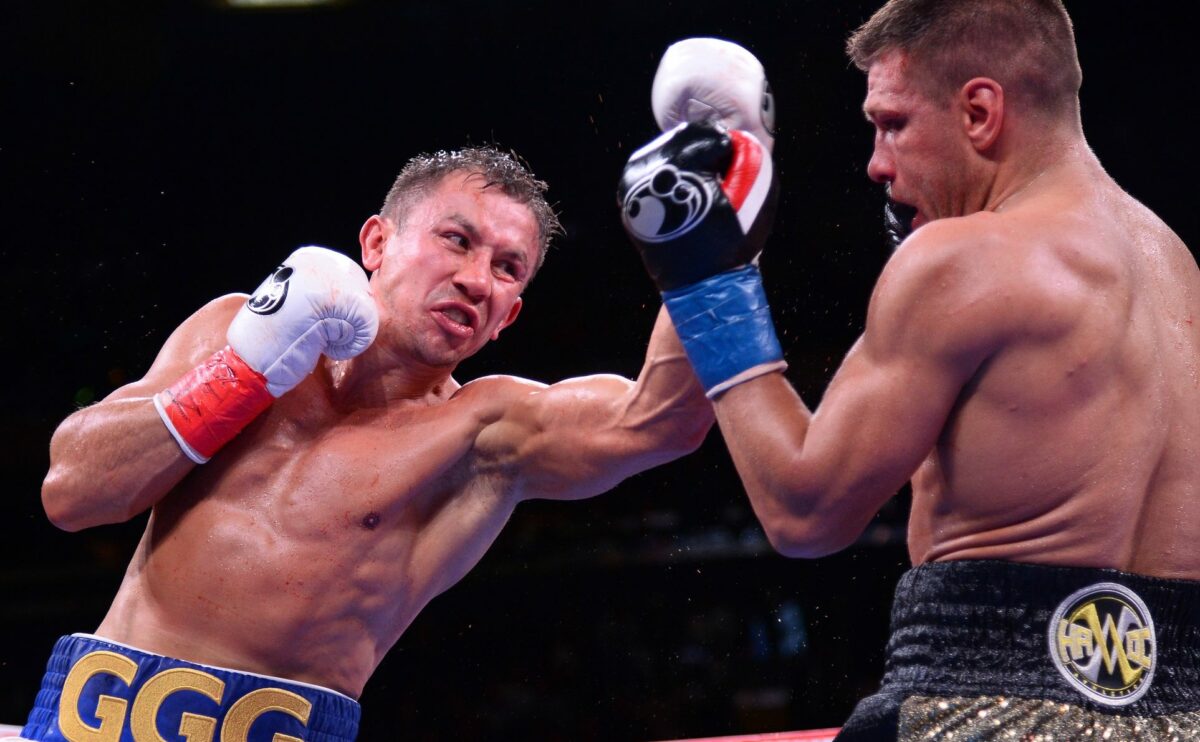Gennadiy Golovkin is a significant favorite to defeat Ryota Murata in their middleweight title-unification bout Saturday in Saitama, Japan, Murata’s home country.
That doesn’t meant there aren’t question marks going into the fight.
One centers on Golovkin’s advancing years. He’ll be 40 when the opening bell rings. And there are other topics for discussion going into Triple-G’s biggest fight in years.
Here are five questions:
Will Golovkin act his age?
Triple-G (41-1-1, 36 KOs) turns the big 4-0 on Friday, the day before the fight with Murata. Will he perform like the Golovkin who ran roughshod over the middleweight division in the 2010s? He struggled to outpoint capable Sergey Derevyanchenkko in October 2019, which raised questions about how much he has left. However, he bounced back to stop less-capable Kamil Szeremeta in seven rounds in December 2020, looking a lot like the Triple-G of old. He will have been out of the ring for 16 months when he faces Murata. That’s a long layoff for anyone. Perhaps the rest will have done him some good. Or maybe we’ll see rust. Bottom line: We’re going to learn a lot about Golovkin’s post-40 ability on Saturday.
Can Golovkin still punch?
Absolutely. Ask Szeremeta, who went down four times before he was finally stopped. I know it’s a cliché but it’s true: The last thing a big puncher loses is his power. And few have been more powerful than Golovkin in modern history. He stopped 23 consecutive opponents between 2008 and 2017. And the only fighters to take him the distance since the streak ended were three of the better boxers in the business, Daniel Jacobs, Alvarez (twice) and Derevyanchenko. No one should be surprised if Golovkin’s ability to hurt opponents is on full display on Saturday, although Murata certainly has been resilient in his career.
How good is Murata?
Pretty good. The 36-year-old from Tokyo burst upon the boxing scene by winning the middleweight gold medal at the 2012 Olympics. He’s had mixed results at an elite level, although he has shined in rematches. He lost a split decision to Hassan N’Dam in 2017 but stopped the Frenchman in seven rounds five months later to win a secondary WBA title. He lost his belt by a wide decision to Rob Brant in 2018 only to take Brant out in two rounds later that year. The WBA promoted him to “super” champion early last year. Murata is a well-schooled boxer with good power – his last eight victories have come by KO – but this is a significant step up in opposition. He’ll have to demonstrate that he truly belongs among the best 160-pounders.
Will fighting at home be an advantage for Murata?
Not to a significant degree if the judges are on the up-and-up. Murata (16-2, 13 KOs) will have the comfort factor of fighting at home and the support of the crowd, which doesn’t hurt. However, Golovkin has been fighting away from home for almost 30 years, first as an amateur and then as a professional. Triple-G fought mostly in Germany early in his career and then moved his base to the U.S., where he developed a considerable following. He has fought in his native Kazakhstan only once – a KO of Nilson Tapia in 2010 – in his professional career. He last fought outside the U.S. in 2016, when he traveled to the U.K. to face Kell Brook. Things went well there: He stopped Brook in five rounds, breaking his orbital bone in the process.
Could Golovkin be looking past Murata?
Doubtful. Triple-G appears to be near a deal to fight Canelo Alvarez a third time in September if things go well on Saturday and Alvarez beats Dmitry Bivol in May, although the fight could still take place even if Alvarez loses. That’s a big deal for Golovkin, who wants one more crack at the Mexican star after a disputed draw and decision loss. That’s why he won’t look past Murata. He knows the last big opportunity will likely disappear if he doesn’t have his hand raised in Japan. And, of course, he’d love to look particularly good against Murata to build momentum toward the ultimate showdown with his arch rival.
